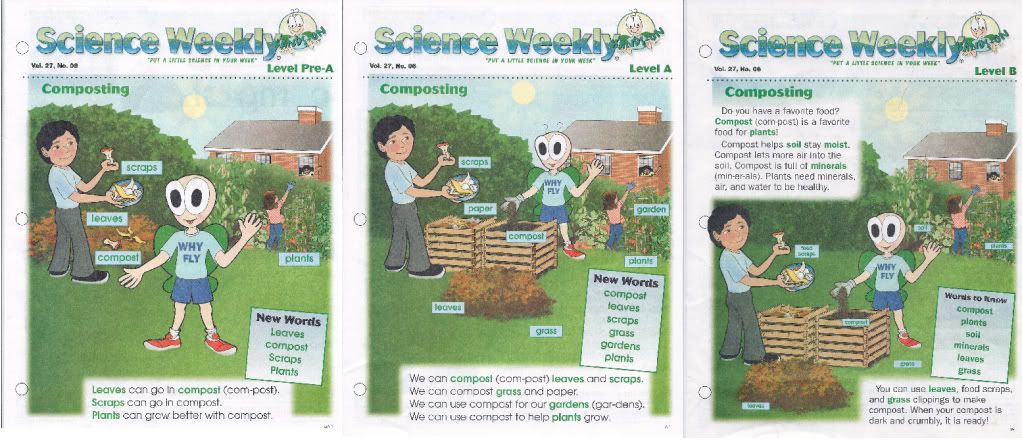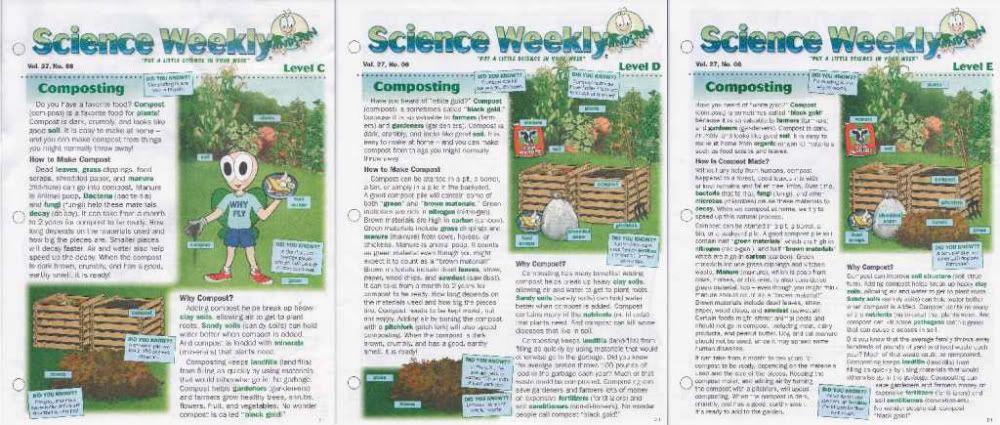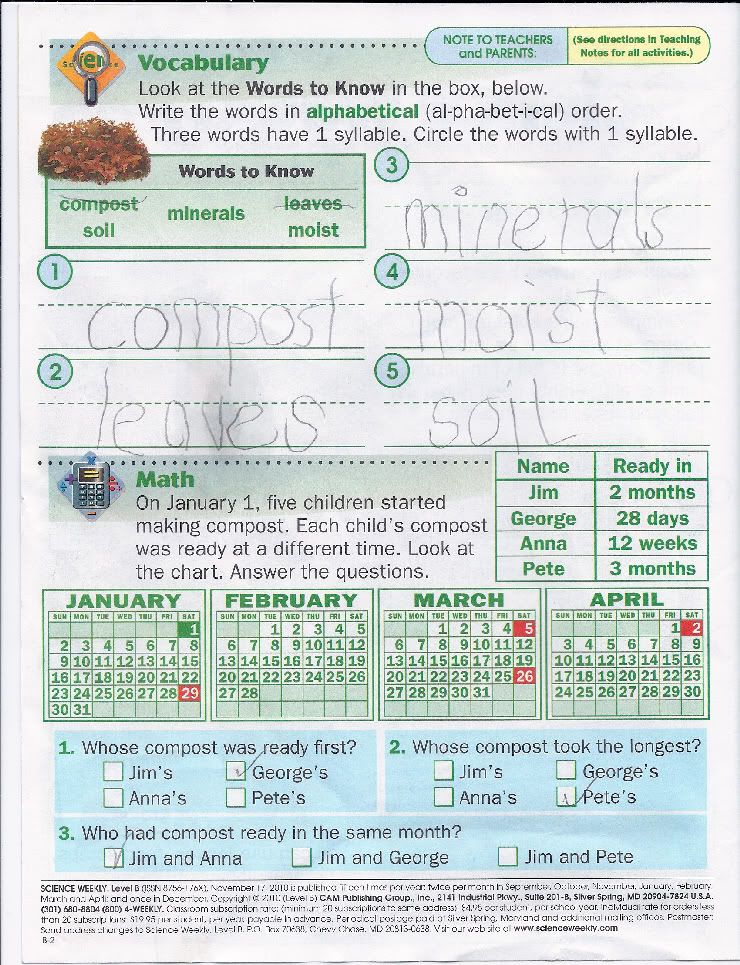The latest product we've been sent to review is the Science Weekly newsletter. The four-page production is available in six learning levels from Kindergarten to Grades 5-6. Although titled "Weekly," a subscription actually has 15 newsletters (for one specific level) during the tradition school year. The experiments (at least the one we received) may also take longer than a week to complete.

The lower levels (K to 2nd from left to right) feature a large picture on the front with labeled objects. Each progressive level has more vocabulary words and more sentences growing to short paragraphs.

The upper levels rely more on text to explain material although pictures are still included. New or unfamiliar terms are followed by parentheses with a syllable breakdown but they aren't exactly pronunciation guides because there are no phonetic symbols.
The inside spread may include a math problem, penmanship practice, or a crossword puzzle but always at least one lab experiment. Like the reading assignments on the first page, each level is a little harder or more complex. The kindergartner traces a few letters in each vocabulary word, traces numbers in an addition problem, orally covers what they ate today and what could go in a compost pile, and creates a small amount of compost in a plastic bag. Level B (the one I used with Schnickelfritz ) has alphabetizing and penmanship practice, math involving a calendar, and a lab with a control and two variables.

The lab experiment was to attempt to make compost in a bag (like Level Pre-A) but in addition to the regular bag you would have a bag with water but no air and a bag with air but no water. The student would observe the bags after one, three, and six weeks. Fritz is already quite familiar with compost and helps me feed our tumbler with kitchen scraps and yard waste so we did not perform the actual lab. Upper level experiments begin to follow the scientific method by requiring the students to hypothesize about results.
I would have like to have the entire four pages of the newletter devoted to science. Having a kindergartner trace 9 + 6 = 15 can't be logger as a math lesson and since I only have one student I don't need time-filling exercises that a teacher juggling a class full of kids might. If I were a mother with kids of varying age I'm not sure I would purchase a subscription for each level. First, it would be expensive at $19.95 per level. Second, I don't think you could keep up with separate experiments for each level. In the composting sample I received you would need 6 plastic bags, 7 gallon size buckets, and 2 5-gallon buckets to cover all six levels and some labs lasted 4 weeks and others 6 weeks. I think I would get the highest level appropriate for my kids and just let the information trickle down to the younger ones. The teaching notes (a separate newsletter included with your subscription) contains answer keys and lab information about all the levels so you could make your own math and vocabulary worksheets.
You can view samples of each level on Science Weekly's website. And you can see what my fellow Homeschool Crewmates thought about Science Weekly by clicking here.


No comments:
Post a Comment